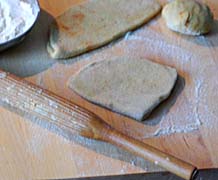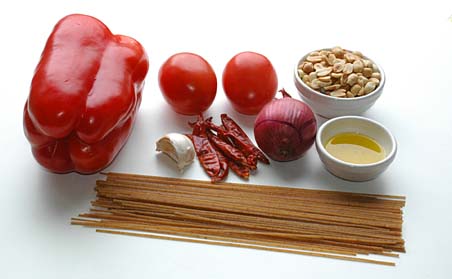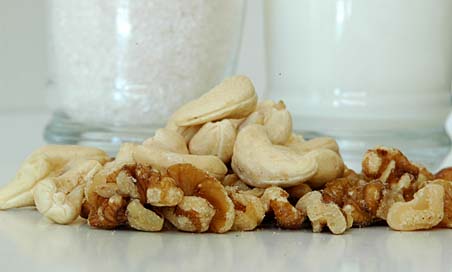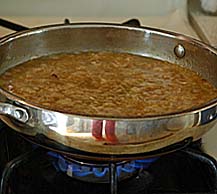Why didn’t I think of this idea before? That is what I thought, when I read the post “Avocado Parathas” by GM of ‘The spice is right’ food blog.
I know that avocado is nature’s ghee/butter. And just like them, ripe avocado is full of fat and has no significant taste to speak of. Avocado’s mashed pulp easily mixes with all kinds of ingredients and helps to make their flavors stand out. I had to give it a try.
Yesterday, I tried the recipe. The result – very smooth, tasty chapatis, the kind we know from India and dream of making it here in US. Smooth, silky flesh of ripe avocados when mixed with chapati flour, magic happened. All the fat in avocado made the flour softer, very pliable, easy to handle and chapatis off the griddle (tava), remained soft even after 6 hours. In this cold, winter weather, that’s a miracle, if you ask me.

Recipe:
for 10 to 12 chapatis
2 cups of durum wheat flour
(I used Golden Temple brand wheat flour, available in Indian grocery shops)
1 very ripe avocado (more about avocado-here)
1/2 tsp of salt
1/2 cup of warm water
I also added 1/4 tsp of red chilli-garlic powder for a little bit of hotness


Preparation:
Avocado: Take a ripe avocado; cut it into half, going around the pit (seed) in the middle. Twist and separate two halves. Stab the knife into the pit; pull it out, the pit will come out easily. Scoop the flesh of avocado using a spoon, from each half. Take it into a small cup; mash it to a smooth paste, using your fingers or with a spoon.
Flour: Take flour in a big vessel. Sprinkle in salt and red chilli-garlic powder, and mix the flour. Then add the avocado paste to the flour and mix thoroughly. Now gradually adding water, make firm dough. Make sure that dough is not too soft or too hard. Knead the dough for two minutes. Cover and set it aside to rest for about 15 to 30 minutes. In the meantime, prepare a curry for avocado chapatis. I made Brussels sprouts-potato curry.


Rolling out Chapatis:
Knead and rollout the dough into a cylindrical long roll on a wood board. Take small lime sized portions and using hands, shape each into a smooth ball shape.
Take the dough ball on a clean wood board, sprinkle some flour on it and around. Using a rolling pin, press/roll out the dough into a big thin round. You can fry it on a hot griddle or to get more flaky layers, what I usually do is, fold the rolled out round twice, to get a triangle shape (see the photo above) then roll into a big, thin triangle.
Cooking chapatis:
Heat a cast-iron griddle/tava, when it is hot, place the chapati and cook it on each side until golden. While the chapati is cooking on hot tava, I roll out another chapati for frying. I usually make 6 chapatis for the two of us for a meal, takes about 15 to 20 minutes maximum.
Serve hot with curry or dal.

Avocado Chapatis with Brussels Sprouts-potato Curry
Thank you GM for sharing this recipe. It’s really is a very neat and clever idea that I am going to apply quite regularly from now on. Who wouldn’t love soft chapatis anyway?































